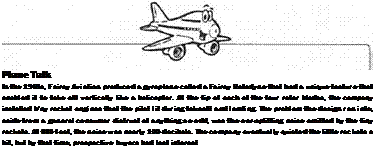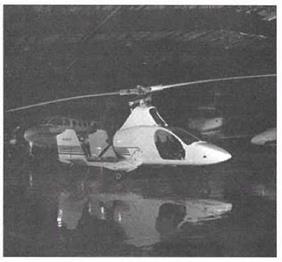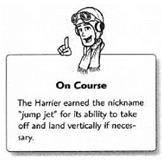An Odd Hybrid
The gyroplane might be the best aircraft you never heard of.
Gyroplanes, or “autogyros” as they are also known, are a strange-looking hybrid of helicopter and airplane, with both a propeller and a rotor. The propeller is usually mounted on the nose, although some new, lighter designs feature the propeller behind the pilot in a “pusher” configuration. The rotor is mounted on top of the gyroplane, just as a helicopter rotor’s is, but it differs from a helicopter’s in a couple of ways. First, the gyroplane’s rotor is not engine-driven. Second, a gyroplane’s rotor is tilted slightly backward (for reasons we’ll discover shortly).
Gyroplanes are remarkable for how little distance they require for takeoff and landing. Some can even take off and land vertically like a helicopter, though that capability requires the use of some extra equipment that in effect creates a collective pitch control like that in a helicopter. Once they’re in flight, gyroplanes can fly at speeds much slower than airplanes, thanks to their free- spinning rotor. Their slow speed means that they don’t need long runways to land like airplanes do. So gyroplane pilots have more takeoff and landing options available to them than an airplane pilot does.
The Free-Spinning Rotor
The secret of the gyroplane’s impressive maneuverability lies in its free-spinning rotor.
 |
Once the propeller begins to move the gyroplane forward, its free-spinning rotor begins to turn. Remember the backward tilt of the rotor that I alluded to? That’s so that it can use the wind caused by the craft’s forward motion. It spins in the wind like a windmill. Also, the fact that the rotor is tree-spinning means it doesn’t create any torque.
|
A gyroplane like the Groen Brothers H2X is a return to a bygone era of aviation. In decades past, manufacturers turned out gyroplanes almost as fast as they produced fixed-wing planes. Some even found their way into service as mail planes. (Groen Brothers Aviation) |
The spinning rotor blades, powered only by wind, act just like the rotors of a helicopter when it is in autorotation. Autorotation, remember, is what enables a helicopter to glide rather than fall if the engine fails. The upward – rising air rotates the propeller and reduces the speed of descent. But the gyroplane differs from an autorotating helicopter because the gyroplane has a working engine that continues to propel it forward. As long as a gyroplane has forward speed to turn its rotor, the rotor will continue to create lift.
Of course, because a gyroplane’s rotor blades are in a perpetual state of autorotation, if the engine does fail, the pilot simply points the gyroplane toward the ground to keep up its speed—turning the gyroplane, in effect, into an autorotating helicopter—and looks for a safe place to make an “off-airport” landing.
So, with all this going for it, why did the gyroplane fade from the spotlight? Bad timing. The gyroplane evolved at a moment in history when it couldn’t quite match up against two other developing technologies—the airplane and the helicopter. Gyroplanes couldn’t fly as fast as the airplanes that were being developed in the early 1930s. They also couldn’t fly very slowly, not to mention hover, like the helicopters that were showing early promise. In a stroke of bad luck, gyroplanes found themselves caught in a historical squeeze play.
|
The Next-Generation Gyroplane
On Course You probably didn’t know that even up until a few decades ago gyroplanes were so common that even the post office used them to carry mail between cities. American-made Pitcairn gyroplanes hauling loads of mail even took off from the roof of the Philadelphia Post Office. |
Far from being a dead technology, gyroplanes are again being manufactured, and with new techniques that promise to make the newest designs far better and safer than those of decades past.
In the Arizona desert near Buckeye, employees of Groen Brothers Aviation are working to perfect a family of Hawk gyroplanes. These distinctive gyroplanes feature a rear-mounted pusher propeller that puts the engine and propeller behind the plane and keeps the forward view unobstructed.
The company has already made a number of successful flight tests with their prototypes, including demonstrating how the gyroplane can be used to spray crops with herbicides and pesticides, a job that is typically done by helicopters and airplanes.
Because gyroplanes are easier to fly than helicopters and because they can take off and land on shorter runways—even vertically in the case of the Groen Brothers model—gyroplanes could find their way into flying from surveillance jobs, such as wildlife census flights, to law enforcement and crop dusting.
Harrier Jump Jet: Airplane or Helicopter?
In addition to being one of the most curious of all military jets, the British Aerospace Harrier’s military type designation, AV-8B, is also a pretty respectable pun for a jet that can “aviate” with more agility than any of its hangar mates.
The Harrier is the only military plane to succeed at fitting a complex system of “vectored thrust” nozzles on a military plane, and make it strong enough and reliable enough to fly in combat if need be.
In fact, the Harrier has seen plenty of combat since it was first rolled out for military duty in 1969. The Royal Air Force flew the jet during the Falklands War in 1982. And during the Gulf War, the United States Marines, whose version of the Harrier is built by McDonnell Douglas under a license from British Aerospace, flew the “jump jet” against Iranian targets.
The secret to the Harrier’s vertical takeoff is the four rotatable exhaust nozzles from its jet engines. From the cockpit, the pilot can rotate the nozzles in virtually any direction, from pointing backward for ordinary forward acceleration, to pointing
downward for vertical acceleration. The nozzles work on the same principle as any jet engine: A reaction force is exerted in the opposite direction to the exhaust nozzle by the heating and expansion of the fuel inside the engine’s combustion chamber.
|
|
The pilot-controlled nozzles give the Harrier amazing agility, not only for vertical takeoffs and landings, but also for in-flight “viffing.” Viffing is a word that means “vectoring in forward flight,” the technique of rotating the nozzle during flight to help evade an enemy.
For example, if a Harrier pilot is being pursued by an enemy fighter, the pilot can quickly swivel the nozzles from the rear, where they provide forward acceleration, to the front, where the thrust will quickly slow the plane down. In flight, the Harrier’s rapid deceleration would cause any pursuer to go rocketing past it. With a deft control movement, the Harrier pilot could swivel the nozzles backward again for forward thrust, and suddenly go from being the hunted to being the hunter.
When a Harrier is on display at air shows, it’s always a crowd favorite. The high wing has a distinctive landing gear arrangement that draws the attention of pilots accustomed to the tricycle arrangement—that is, accustomed to two sets of landing gear located about halfway down the fuselage and set on either side of the plane, plus a nose gear.
The Harrier has a distinctive setup of one nose gear and one main fuselage gear, both lined up on the center line of the airplane so that the Harrier looks like it’s riding a bicycle. To keep it from tipping over, a single wheel drops down from beneath each wing. The location of the wing gear gives the Harrier important stability during landings, when it tends to tip from one side to the other pretty noticeably.
The Harrier isn’t only an oddity. It’s also a serious weapon. It can fly at speeds approaching Mach 1, which is over 700 m. p.h. at sea level. It can carry Sidewinder heat – seeking air-to-air missiles, air-to-ground Maverick missiles, and a six-barrel machine cannon, among other things.
The Harrier is fun to watch take off and land, but not if it’s flying in your direction and you’re the enemy!
|
Plane Talk A Seattle man, John D. R. Leonard, took the Pepsi Challenge seriously when a company commercial advertised that consumers could redeem seven million "Pepsi points/ at a cost of $700,000. for a Harrier Jump Jet Leonard accumulated the points and arrived at Pepsi headquarters to exchange them for a fighter Jet but was told the commercial was a spoof, and there was no Harrier anywhere in the prize package. Leonard sued the company for breaking their promise, but a judge saw the humor in the ad, even if Leonard didn’t, agreeing with Pepsi that the ad was fanciful. For his trouble, Pepsi sent Leonard packing with some free Pepsi points. |















